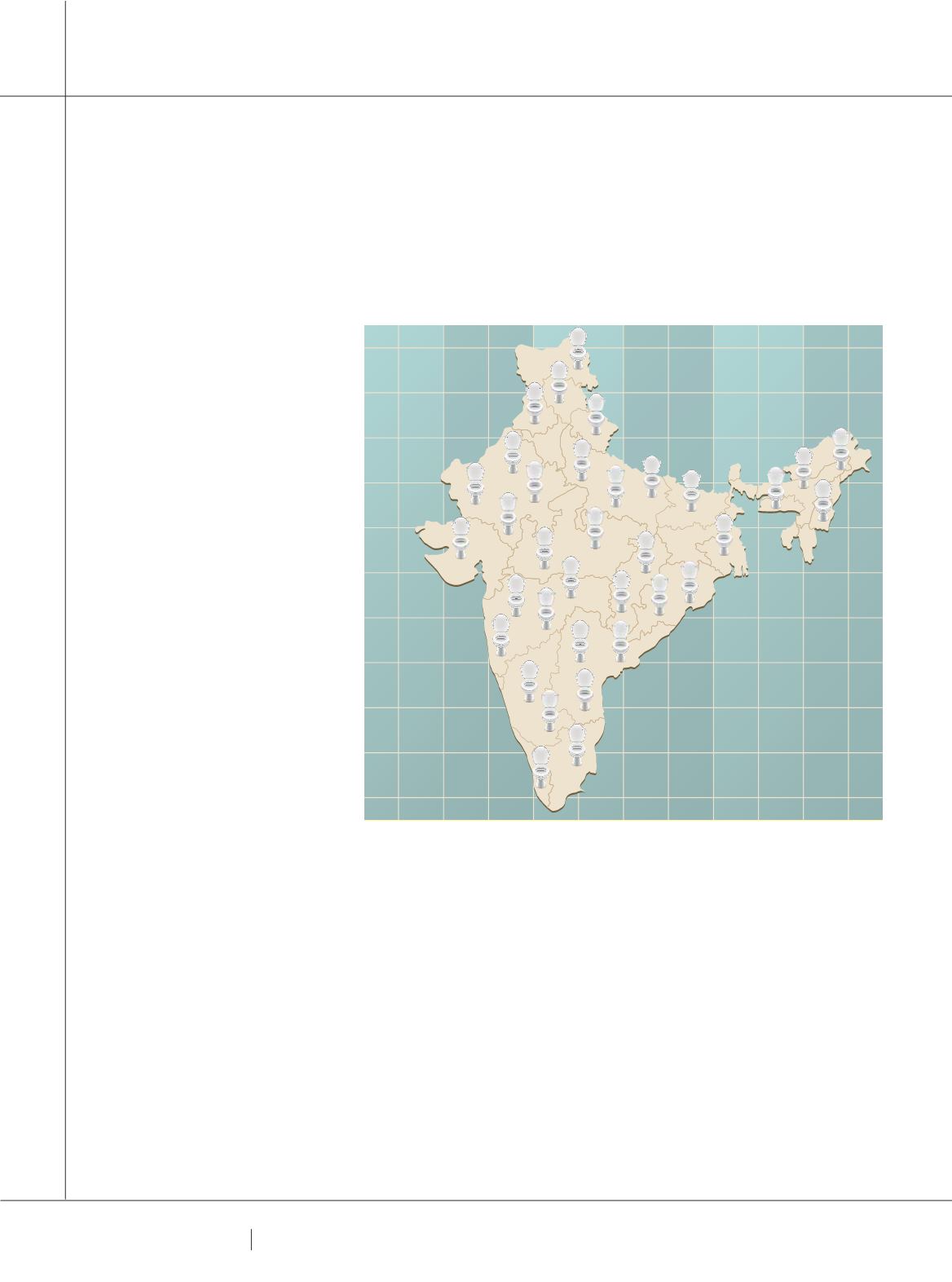

9 2
PLUMBING CONNECTION
WINTER 2015
INDIA’S TOILET REVOLUTION
I
ndia’s Prime Minister Narendra
Modi has introduced the initiative
as part of the Clean India Campaign
and has pledged that every Indian
home will have a toilet by 2019.
Unfortunately, ingrained habits,
customs and corruption continue to
stifle these efforts.
“We have had a huge problem in the
past with what we call ‘ghost toilets’,”
said Sandhya Singh, an official at
the Ministry of Drinking Water and
Sanitation.
“The government has given money
to build latrines, but we remain unsure
whether they have been built at all or
are reported as being built,” Singh said.
“We have also sunk funds into toilets
that are not functional anymore.”
Singh and other ministry
bureaucrats are undertaking the
gargantuan task of recording and
photographing the locations of latrines
around the country to establish
whether they are being used regularly
and are in a reasonable working
condition.
“We have set up a database where
volunteers and officials can update all
the information in real time,” Singh
said. “We are insisting on photographs
to ensure no facility is reported twice.
So far, the database already has
information about 100,000 shared-
use rural toilets.”
Toilets seldom rank among the top
priorities of world leaders, but Modi
sees this process as an important step
towards his ultimate goal to strengthen
India’s economic position and raise it
to a level befitting the second-most
populous nation on Earth.
A recent World Bank Report found
that a lack of working toilets was
responsible for about $53.8 billion
in lost economic activity in India in
2006 due to poor hygiene: equivalent
to about 6.8% of the country’s gross
domestic product for the year.
Increases in the number of (at times
fatal) parasitic worm infections and
diarrheal illnesses can be directly
attributed to the lack of appropriate
sanitation facilities.
With the World Bank reporting
almost 70% of rural Indian households
were still without a toilet in 2011,
the Prime Minister’s task is certainly
immense. In 2013 the World Health
Organization and United Nations jointly
estimated that 620 million people
(about half the country’s population)
regularly defecated outdoors.
But building more toilets is only half
the battle.
The Mumbai-based Economic and
Political Weekly, recently published
a study that found nearly 40% those
defecating outdoors claimed it was
their preference to do so. The survey
focused on 3235 households in
rural India.
“Our data predict that if the
government were to build a latrine
for every rural household that lacks
AT THIS MOMENT, GOVERNMENT INSPECTORS ARE COMBING THE INDIAN COUNTRYSIDE. THEIR QUARRY
BEING THE MANY TOILET-LESS HOMES STILL FOUND DOTTING THE SUBCONTINENT. THIS ARTICLE ORIGINALLY
APPEARED ON GLOBALPOST.
PLUMBING ABROAD
The Indian government is on a mission to ensure every home in India has a toilet
by 2019.
















